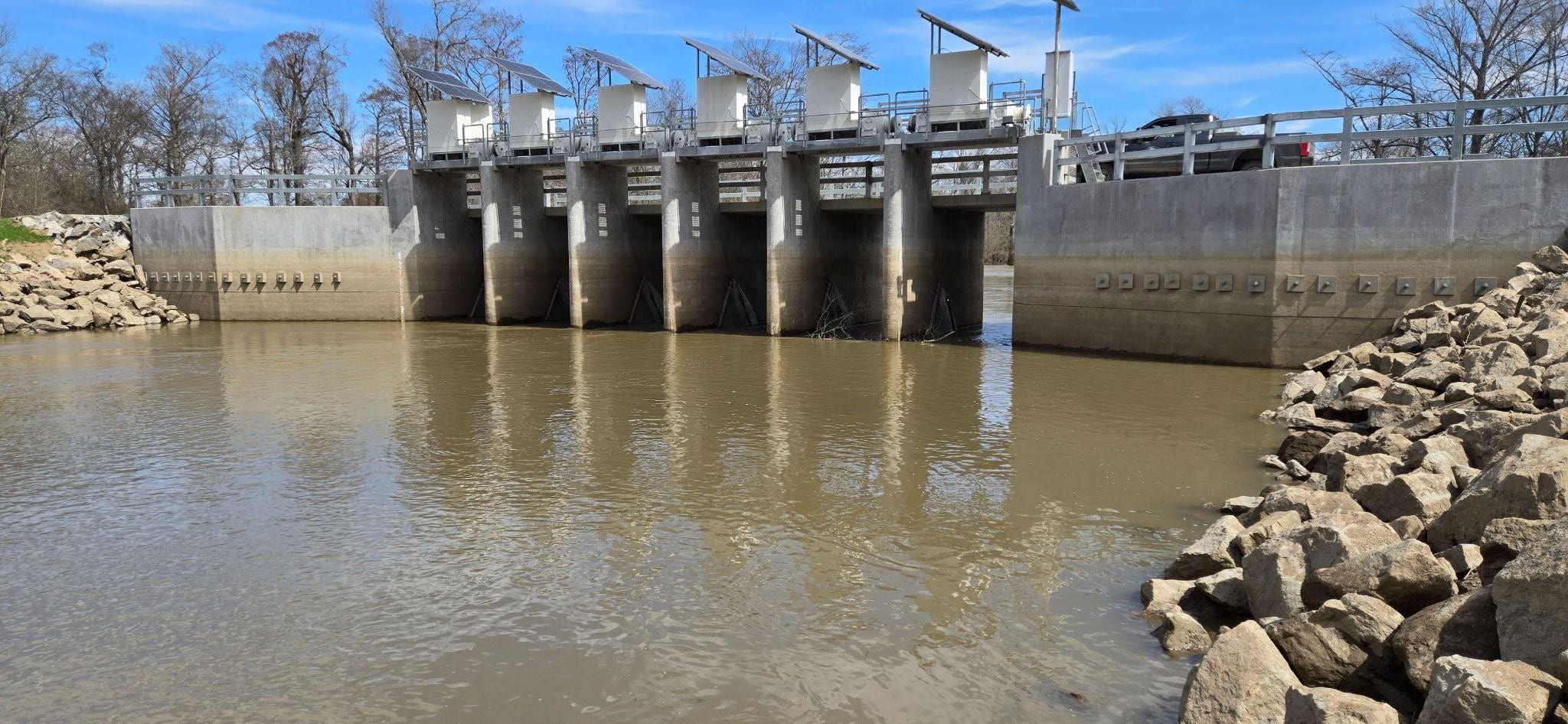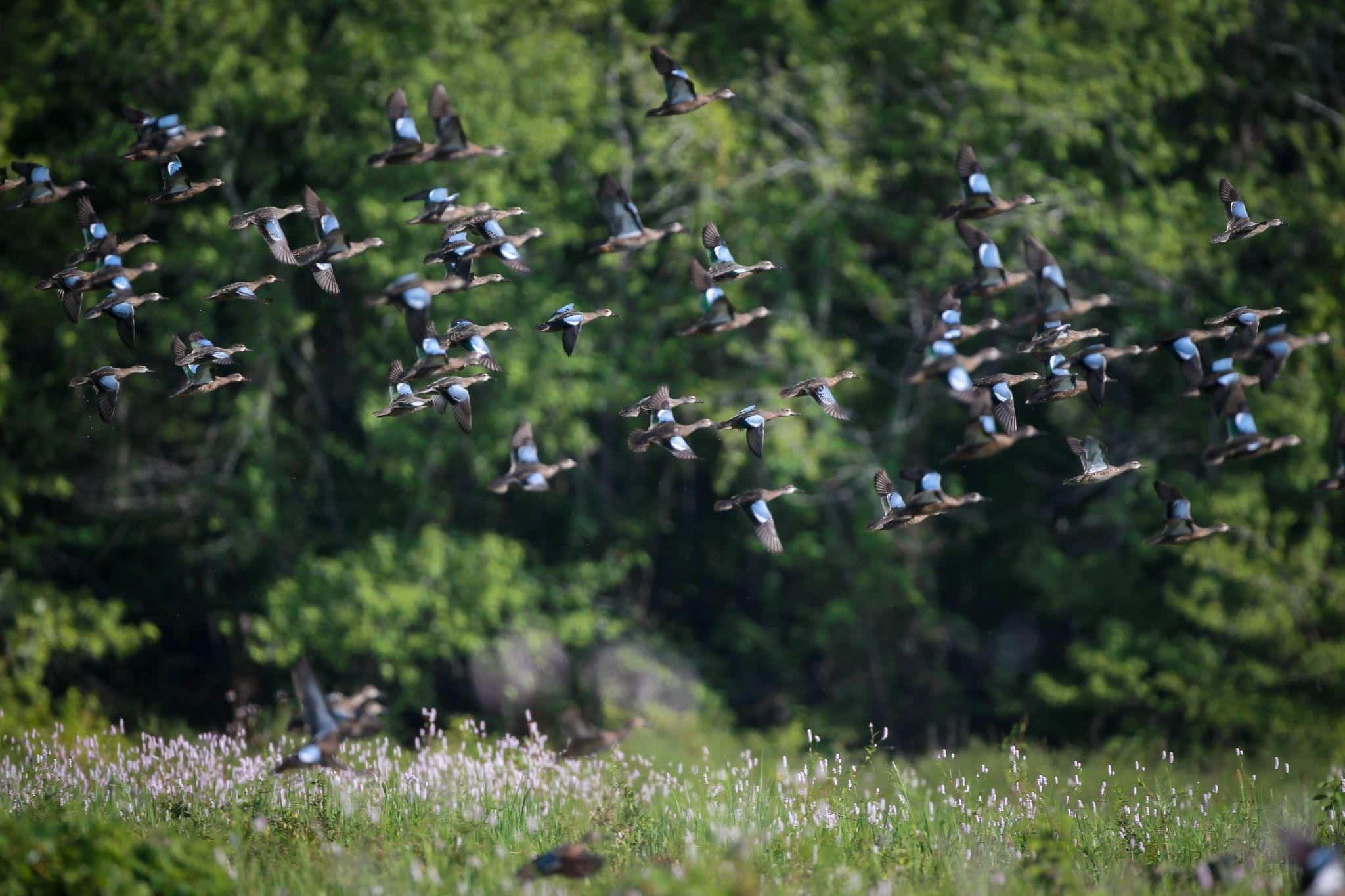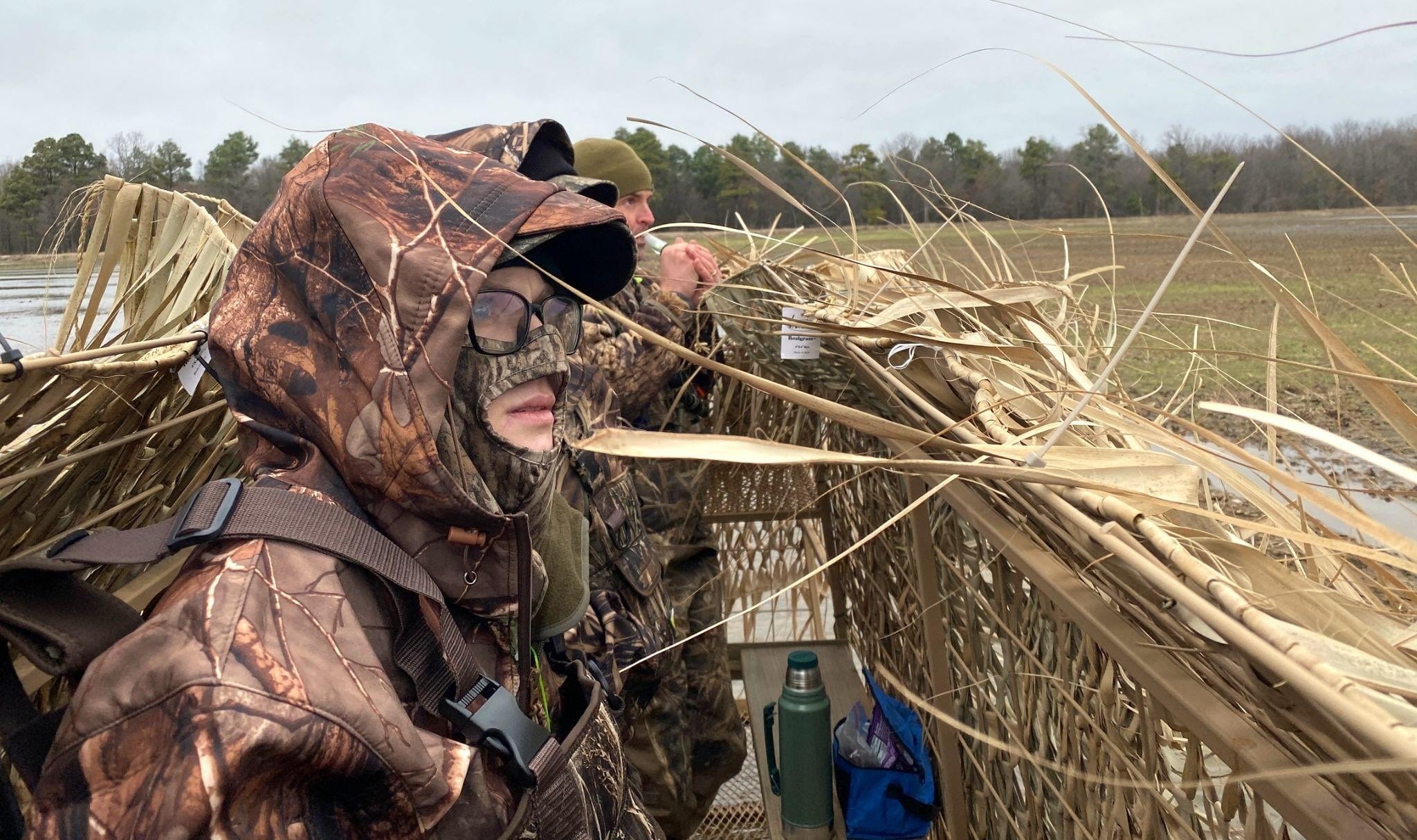Greentree reservoirs, moist-soil units prepped for season
BY Jim Harris
ON 11-12-2025

BALD KNOB — Last waterfowl season, the big news on the infrastructure front was the dedication and opening of a new water-control structure on Glaise Creek at Henry Gray Hurricane Lake WMA near Bald Knob in early November, just before the hunting began. With a few little details wrapped up over the next few weeks, the completed structure had a noticeable positive impact on that WMA for the final month of the season and into the new year, which included some massive spring downpours and flooding.
The new water-control structure on Glaise Creek got its first real springtime test in early April. Heavy rains dumped at least 6 inches over many portions of the state and over a foot of water in certain areas, raising the White River and its tributaries to major flood stage.
In past years, that might have been bad news for Hurricane Lake WMA during the waterfowl offseason. In some years, flood waters stayed on the WMA into early summer. Lingering water that stuck around during spring and summer in past years harmed the red oaks that provide important habitat and food for migratory birds, particularly mallards, in the bottomland hardwood forest of Hurricane Lake.
Before the improvement, Arkansas Game and Fish Commission habitat biologists would watch water slowly move through the small, outdated water-control structures, including one on Glaise Creek that would pass, at best, about 2,100 cubic feet of water per second.
About 11 times as much water was passing through the new structure after the early April monsoon. At one point, water passed through the six overshot gates at 24,000 cfs. A massive amount of water on Glaise Creek pushed through the system, into Whirl Lake and then on to the White River in an amazingly short amount of time, Jason “Buck” Jackson, the AGFC’s state wetlands coordinator, noted.
“It’s a very smart system, to say the least,” Jackson said, adding that under the previous system, it would take in excess of 55 days to clear out flooding around Glaise Creek and the surrounding area, and now it takes about 12 days for a similar flooding event.
There won’t be any planned in-season changes on the greentree reservoir or moist-soil unit areas this season, according to Jackson, but plenty of off-season work has gone on at several spots in 2025.
Work in Phase One of a major, two-phase project has been completed on the renovated water-control structures at Shirey Bay Rainey Brake WMA in northeast Arkansas, Jackson said. Also, a spillway modification on Earl Buss Bayou DeView WMA near Wiener was underway during the fall. Progress continues on hydrologic modeling efforts and deciding on a construction design for GTR work at Dave Donaldson Black River WMA, but hunters won’t notice anything this season.
“We’re hopeful that we can get started on it maybe next fall,” Jackson said.
Black River WMA and George H. Dunklin Bayou Meto WMA are the AGFC’s bigger projects ahead in renovation of greentree reservoirs, and it will take quite a while to tackle them completely, Jackson indicates. As for Bayou Meto, he said, “It’s moving along, but it’s slow because it’s a big area, a big watershed with developing inputs.” The agency is in the process of Hydrologic and Hydraulic (or H&H) modeling at Bayou Meto, which uses computer models to simulate the movement of water during rain events to better evaluate the effectiveness of designs for water management.

In moist-soil work, an extensive repair to the water-control structure at Galla Creek in the Arkansas River Valley was being wrapped up during the fall, with a second pour of concrete in mid-September. Contractors were scheduled to install a new water-control structure at Ed Gordon Point Remove WMA on the tailwater ditch going into Remmel Marsh. The structure at Ed Gordon will not have its planned overshot gates in place by the season — that will happen next year, Jackson indicated — but he said he was able to put in regular aluminum flatboard risers to control the water this season.
Structures at Shirey Bay Rainey Brake were installed well ahead of schedule this past year, Jackson said. During last duck season, Jackson said, he and the contractor of the water-control gates came up with a way to raise the gates without the planned electronics in place. Those electronics, offering a technology that allows the system to adjust the overshot gates to maintain a predetermined water level even with heavy rain events, and allowing staff to connect remotely with the system to adjust the gates, has changed the way the AGFC manages water in its GTRs.
“We’re proactive now rather than reactive to water, and this style is much safer for staff,” he said.
Top photo
The new Glaise Creek water-control structure, dedicated last November, made moving water out of Henry Gray Hurricane Lake WMA faster and easier for AGFC staff, and that greatly benefited the vital red oak trees as well.
Photo 2
Moist-soil work during the offseason is never-ending for AGFC staff, but when the migration comes for such waterfowl as blue-winged teal, it makes all the effort worth it.
Recent News

Duck Season Social coming to North Little Rock
Nov. 12, 2025
Subscribe to Our Weekly Newsletter E-mails
Don’t miss another issue. Sign up now to receive the AGFC Wildlife Weekly Newsletter in your mailbox every Wednesday afternoon (Waterfowl Reports are published weekly during waterfowl season and periodically outside the season). Fishing Reports arrive on Thursdays. Fill in the following fields and hit submit. Thanks, and welcome!

